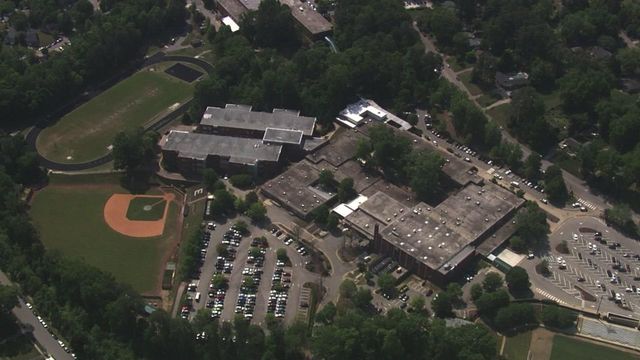Ancient lord’s tomb found filled with gold and multiple sacrificial bodies

(CNN) — Excavations of an archaeological site in Panama have revealed the grave of a religious leader buried over 1,200 years ago alongside a cache of gold objects — and numerous other human remains.
Researchers found the ancient tomb in El Caño Archaeological Park, a site in Coclé province known as a hotbed for pre-Columbian discoveries, particularly lavish burial chambers. The newfound enclosure, built around 700, is the ninth tomb unearthed from the park since excavation of the site began in 2008, according to a March 1 news release from Panama’s Ministry of Culture.
The tombs, including the latest to be uncovered, are resting places for people who had a higher status within their societies, said Dr. Julia Mayo, the excavation’s leader and the director of the El Caño Foundation, a group that studies Panama’s cultural heritage through research on the archaeological site. The research team believe the person found lying at the center of the grave had higher status, indicated not only by his physical position but also gold and ceramic artifacts that surrounded the body.
The civilization of the region surrounding El Caño at the time treated the site as sacred and worshipped their “ancestors,” referring to those remembered for having done important things. “After the death of these people, (it was believed that) a constant communication was established between the ancestor and his descendants,” Mayo said. “Our study (of the tombs) highlights the practice of ritual death in funerary rituals linked to (a higher) status.”
The newly uncovered elite leader was likely a 30- or 40-year-old man, dubbed “Lord of the Flutes” by the archaeologists because he was entombed alongside a set of animal bone flutes that were likely used for religious ceremonies , she added.
And as researchers continued to explore the grave, they realized the Lord of the Flutes might have had quite a bit of company on his journey to the afterlife — potentially up to a few dozen companions whose remains were found buried beneath the offerings that surrounded him.
‘A representation of social order’
The researchers found similar patterns among the tomb and the eight previously studied tombs that suggested the other bodies belonged to people sacrificed to accompany the dead to the afterlife, Mayo said. It appears the newly discovered remains were all buried at the same time and also had signs of a ritual death, she added.
El Caño is divided into two sectors of burial chambers: a high-status sector that holds burial chambers with multiple bodies, and a low-status sector where graves include only one body per grave, Mayo said. Excavation is not complete, so it’s unclear how many bodies are within the newly discovered grave, but the other eight tombs have revealed anywhere from eight to 32 bodies.
While the other tombs held what researchers believe to be military leaders, the Lord of the Flutes was likely more of a religious leader, as the body was “buried with flutes and bells and not, as in the case of other lords found at the same site, with axes, spears and objects made with teeth of large predators. This calls attention to the importance of religion in this society,” Mayo said in an email.
The excavation of the ninth tomb is expected to be complete by this time next year.
Ancient burial practices
The archaeologists found the body of the supposed religious leader buried face down and on top of the body of a woman, the release stated. The relationship the man might have had with the woman is unknown, Mayo said.
“The face-down mode of burial was common at this time period in this region, but the positioning of the male over the female individual is not,” said Nicole Smith-Guzmán, the archaeology curator with the Smithsonian Tropical Research Institute in Panama City, via email.
However, she added other researchers reported the discovery of human remains dating back more than 1,000 years buried in similar positioning at a nearby site called Sitio Sierra, in the same province as El Caño. The researchers at the time speculated that the pair represented a husband and wife, but the theory remains unconfirmed.
“Nevertheless, it is likely that there was some sort of social relationship between the two individuals during life that was important to maintain in death,” said Smith-Guzmán, who was not a part of either discovery.
Gold adornments cemented powerful alliances
Among the artifacts found scattered on top of the burial chamber and surrounding the Lord of the Flutes were five pectorals — a form of breastplate jewelry for the deceased — two belts made of gold beads, several gold bracelets and necklaces, as well as two earrings in the form of human figures, and a few pieces of jewelry made from animal teeth, including earrings made from the teeth of a sperm whale, according to the release.
These “exotic” materials were usually interpreted as the leader’s strategies in life for getting more prestige within their territories, said Ana María Navas Méndez, an assistant professor of sociology and anthropology at Illinois State University, in an email. The ancient chiefs of Latin America would often establish political and economic relationships with leaders of nearby communities, allowing precious and artisan goods to be swapped with one another, she added.
Several of the artifacts found within the tomb were “stylistically similar to those produced in the Quimbaya region (of Colombia),” Mayo said, adding that this indicates there was a great deal of interaction and exchange of materials “between the populations that inhabited the central region of Panama and the north of South America.”
City of the dead
Experts believe El Caño functioned as a regional ceremonial center or necropolis (city of the dead) for elite members of society, Smith-Gúzman said.
There have been two attempts — the most recent in 2021 — to figure out whom the various tombs found at the El Caño site once belonged to, Mayo said. But each attempt failed to pick up any DNA from the human bones, most likely because the region’s hot and humid climate is not ideal for preservation, she added.
“(This discovery) offers new evidence to continue studying the chiefdoms in Panama that could be compared with previous findings,” Navas Méndez said. “With this new evidence, archaeologists could ask new questions about the interactions between chiefdoms, about the political economy of pre-Columbian societies, about religious aspects, about gender, and so on.”
The-CNN-Wire™ & © 2024 Cable News Network, Inc., a Warner Bros. Discovery Company. All rights reserved.









